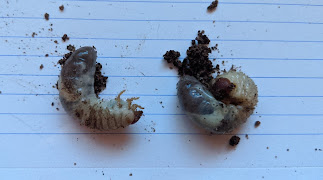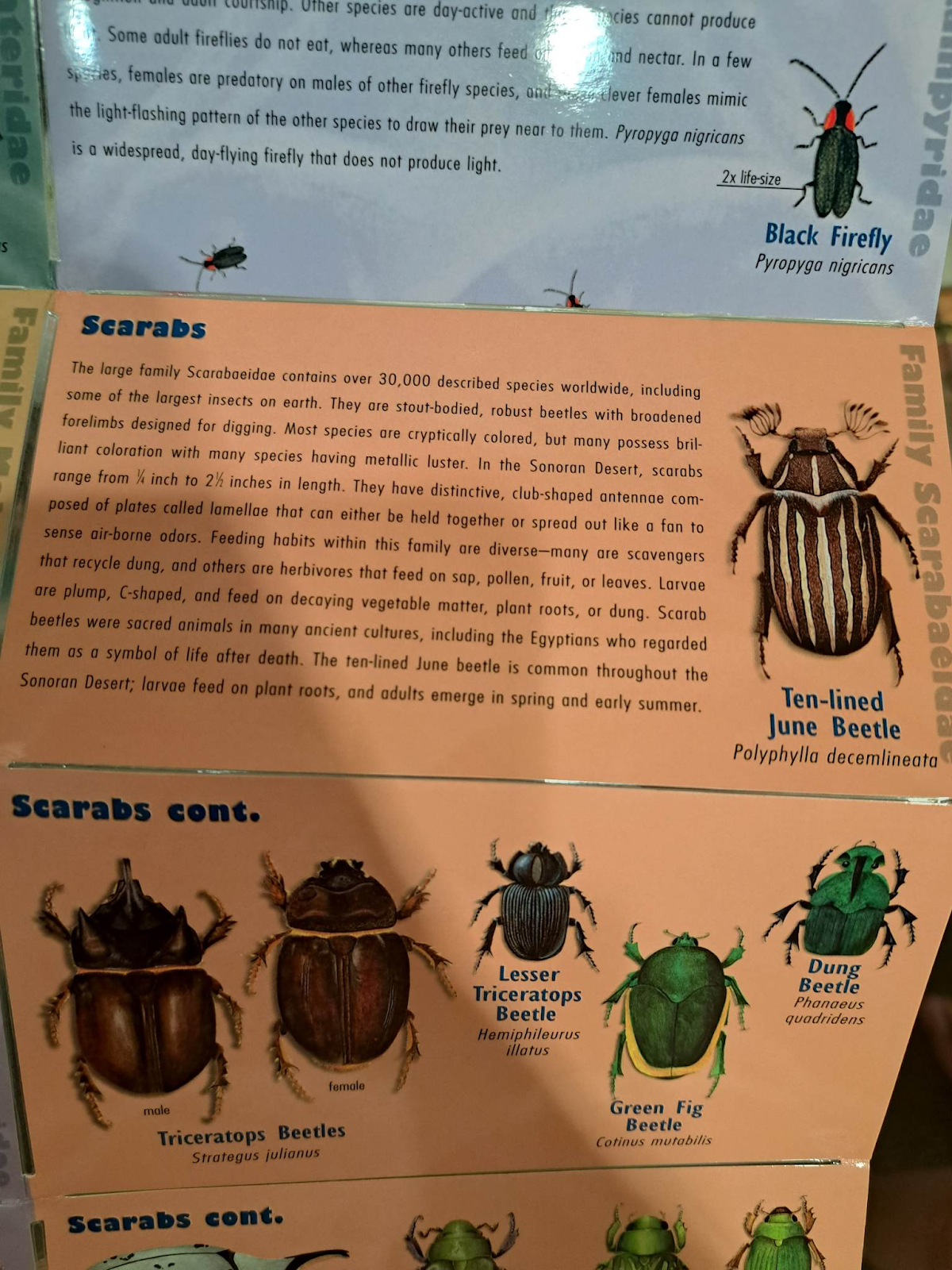Larvae and Pupae
- Get link
- X
- Other Apps
Summary of Captive Larva:
Larva X1 - Found February 1, 2020: Pupated, eclosed. Deceased.
Larva X2 - Found February 1, 2020: Pupated, eclosed. Deceased.
Larva X3 - Found October 17, 2022. Deceased.
Larva A - Found April 3, 2023. Pupated. Deceased.
Larva B - Found April 3, 2023. Pupated, eclosed. Still alive.
Larva X1 - Found February 1, 2020: Pupated, eclosed. Deceased.
Larva X2 - Found February 1, 2020: Pupated, eclosed. Deceased.
Larva X3 - Found October 17, 2022. Deceased.
Larva A - Found April 3, 2023. Pupated. Deceased.
Larva B - Found April 3, 2023. Pupated, eclosed. Still alive.
| April 3, 2023. Larva A and B. Found in my compost heap. Again, there were two of them in close proximity. I dug in the surrounding dirt for a few minutes after I found the pair and didn't find any more. I put each in their own 4 x 4 x 2 ventilated plastic container with compost substrate, so I can take them out to look at them. | |
| April 25, 2023. The larvae pupated. Pupa B (top) went into a polyacrylamide water bead substrate which I hope will help me take it out for a photo every day. Pupa A (bottom) went back into the soil. They are in separate 16 oz plastic containers with mesh tops. On the same day, I dumped the tank containing the larvae from October and could not find any evidence of them, so they likely died before ever having made it to pupation. I consistently misted and added water to the tank but when I dumped it I found the substrate below the surface was pretty dry, so that's a potential cause of death. The tank didn't contain other insects that could have predated them. |
| May 11. Pupa B eclosed overnight. I dug up Pupa A but it didn't survive. There were lots of other insects in its substrate and they may have eaten it, either before or after death. I'm sad to have lost it but it demonstrated another benefit of the water bead substrate because I can make sure it's predator-free. Pupa B, now Beetle B, is a female and appeared healthy. She weighed in at 1.10g at eclosement, if that's a real word. The pupa hovered around 1.83g - 1.85g. Total time of pupation was somewhere between 38 and 18 days. Humidity in container was 75%, temperature in the high 70s/low 80s. Substrate was waterbeads and tap water, pH 7.9. | |
- Get link
- X
- Other Apps







Comments
Post a Comment